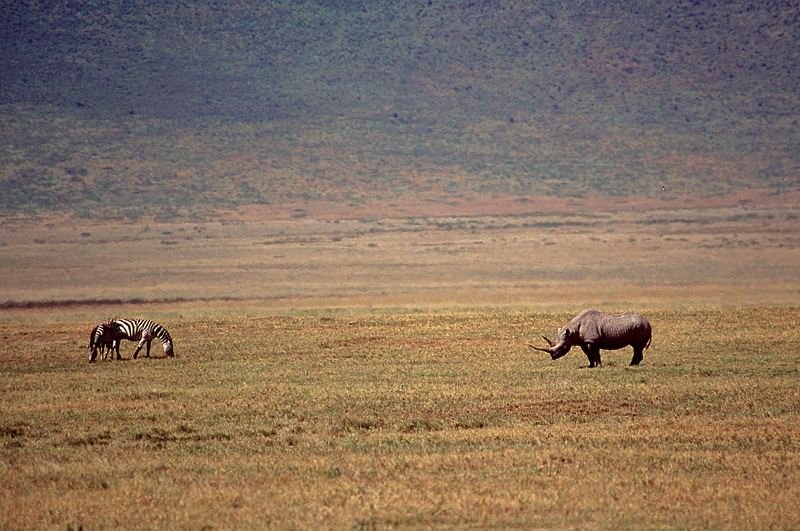
Nature in the crosshairs.
Paul Simon
The black rhino was, until recently, the most numerous of its species in Africa. Unrestrained poaching, reminiscent of the bison experience on America's prairie, has led to a virtual collapse of the species. Before European explorers and their guns penetrated darkest Africa, a brief two centuries ago, there were an estimated one million black rhino south of the Sahara. By 1970 their numbers had crashed to 70,000. Shocking enough, yet today only 3,000 or so survive, under armed guard and behind electric fences. Fifty million years of history may soon come to a screeching halt, the snuffle of the great gray ghost silenced. From superbeast to mythological unicorn, right before our eyes.
Thanks to a massive global effort the population of white rhinos is holding steady at about 15,000, mostly in South Africa. Though this is encouraging the species is still highly endangered. And the threat of poaching is ever present.
Though massive and powerful, the rhino is, nevertheless, at the mercy of man and his greed and self-importance. And the diabolical cast is international. According to official records, oil rich North Yemen imported 22 tons of rhino horn in the 1970's and 80's, killing 8000 animals in the process. The horns were used to make highly polished handles for jambiyyas, the traditional curved dagger that is a symbol of status and wealth in this tiny, globally insignificant, nation. With relentless pressure from other nations North Yemen finally outlawed the importation of rhino horn and is much less a threat to the species.
And the same can be said of Japan and South Korea. Until recently these Asian powerhouses imported large quanitities of rhino horn for use in traditional medicine. Once again global pressure was successful in bringing this practice to a halt, with both countries now banning import. The importation of rhino horn was also recently banned in China though there is still a black market.
In the last decade Vietnam, an emerging economic power with an expanding affluent class, has become the major importer of rhino. The horn is increasingly used as a status symbol by the wealthy, in business dealings and social gatherings. The horn is ground to a powder, mixed with water and sipped like a cocktail, merely for show. This frivolous behavior was responsible for the slaughter of over a thousand white rhino in South Africa in 2014. The horns now sell for $50,000 per kilo.
Overall illegal wildlife trafficking generates more than 20 billion dollars per year, ranking it alongside illegal drugs, guns, and human trafficking as the world's top criminal activities.